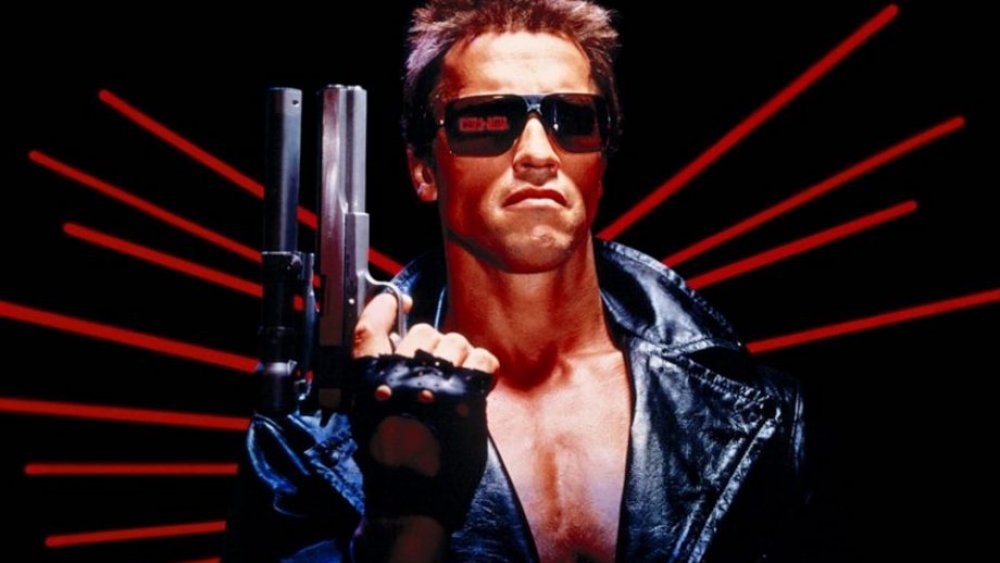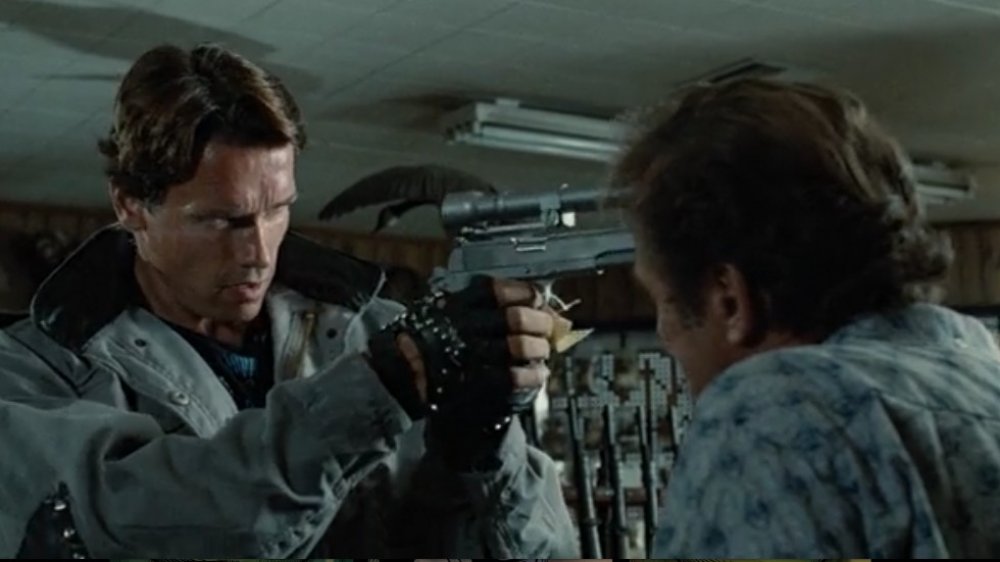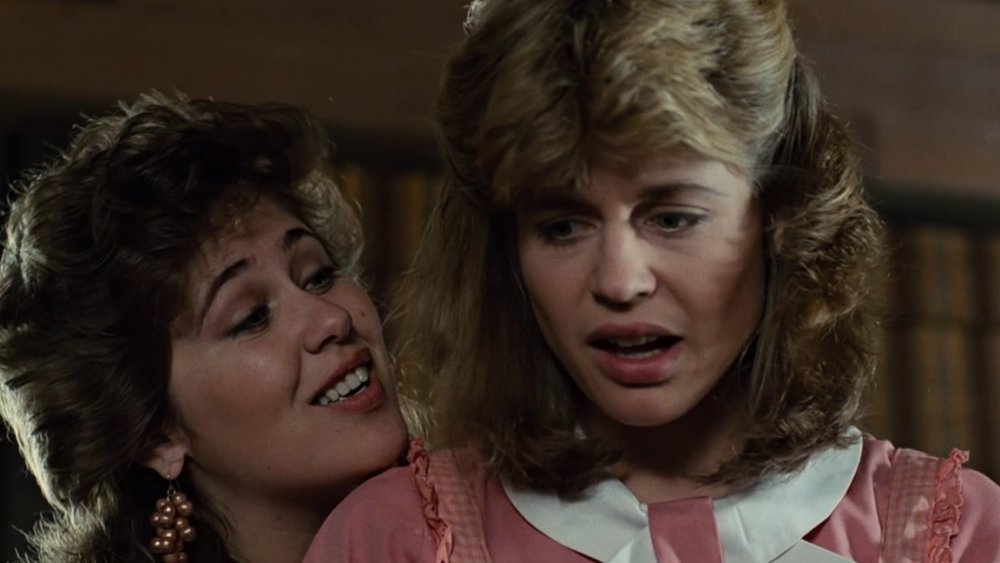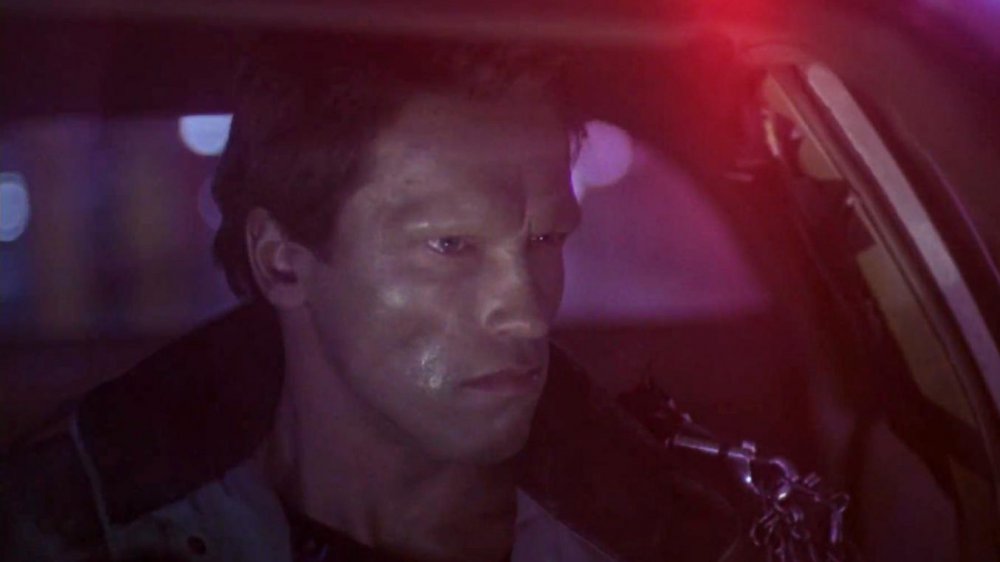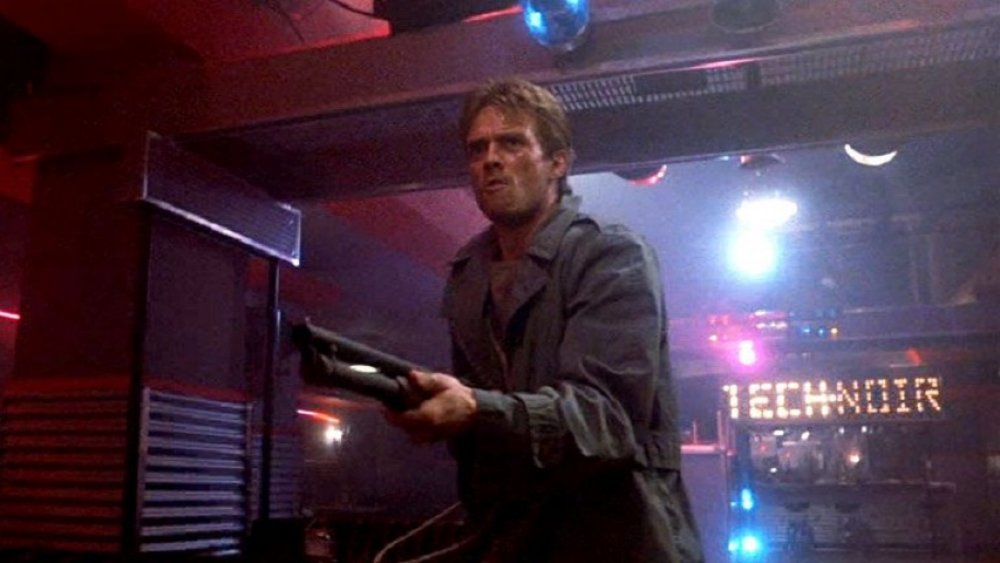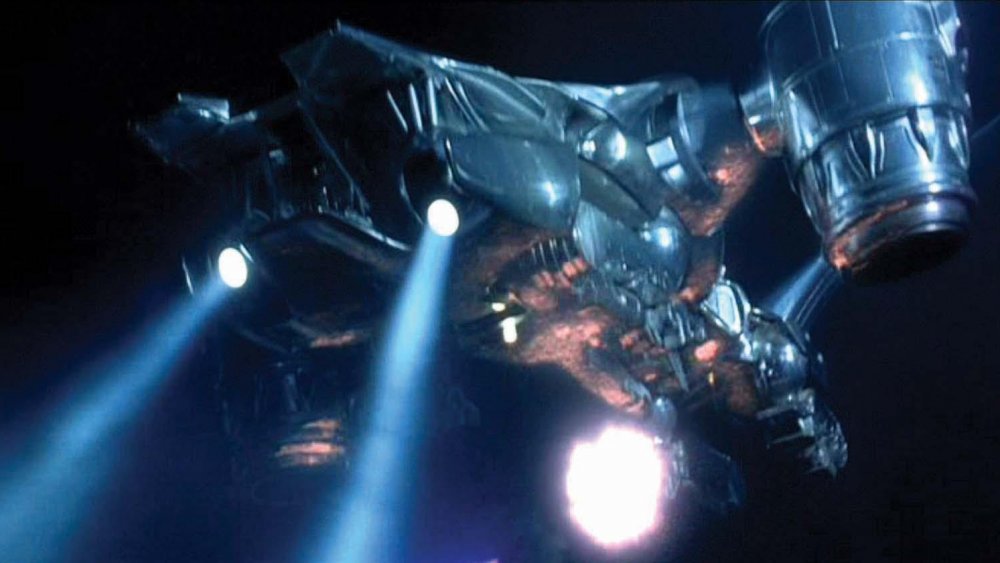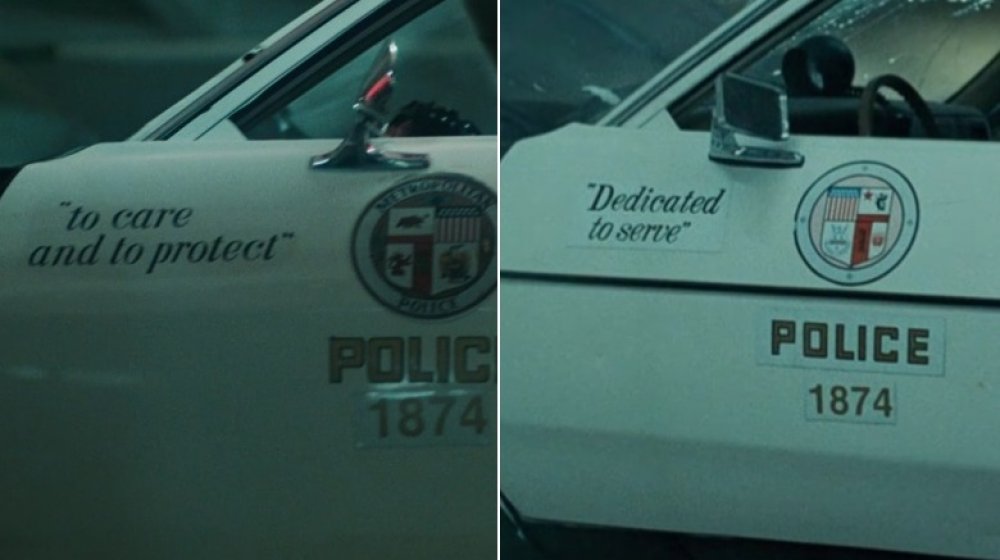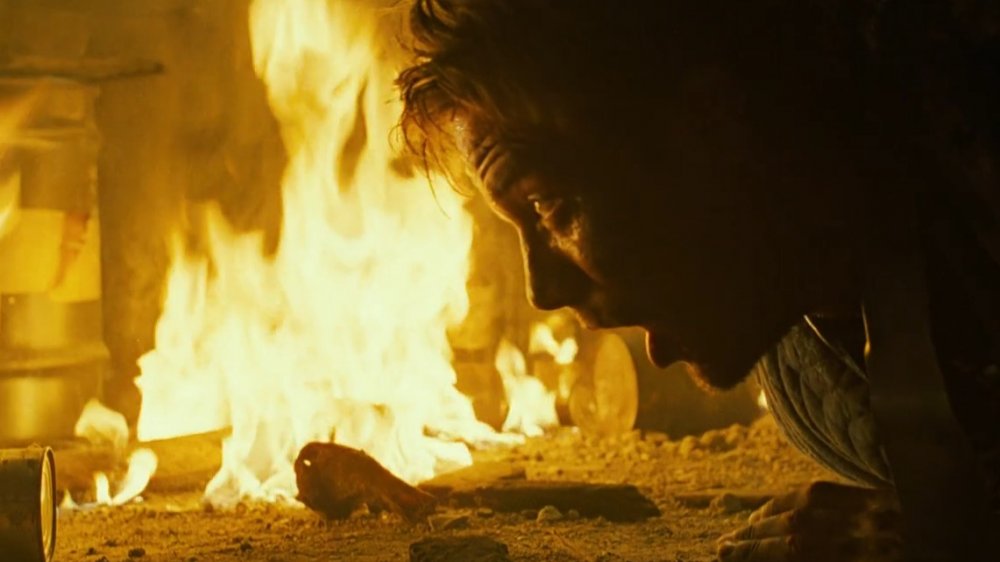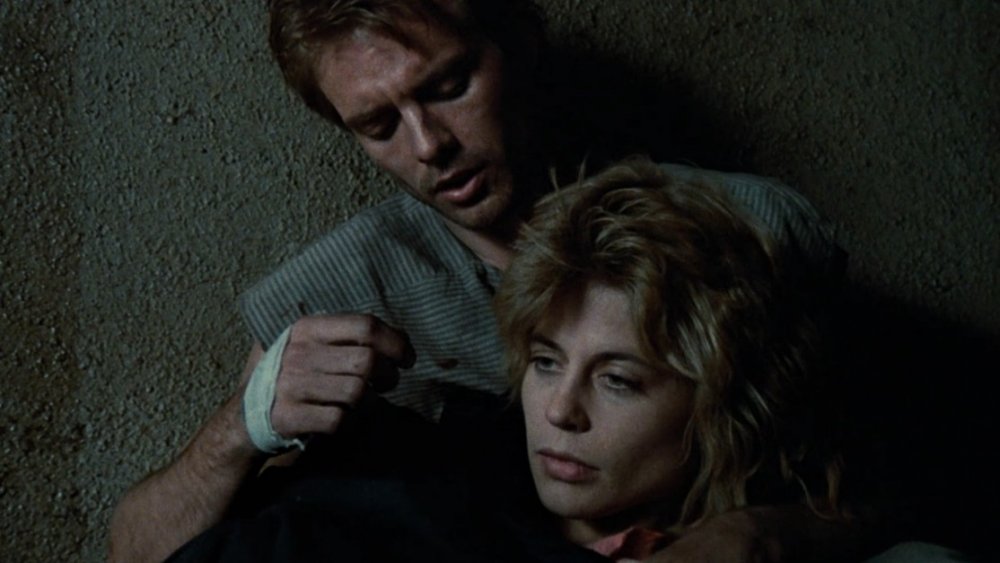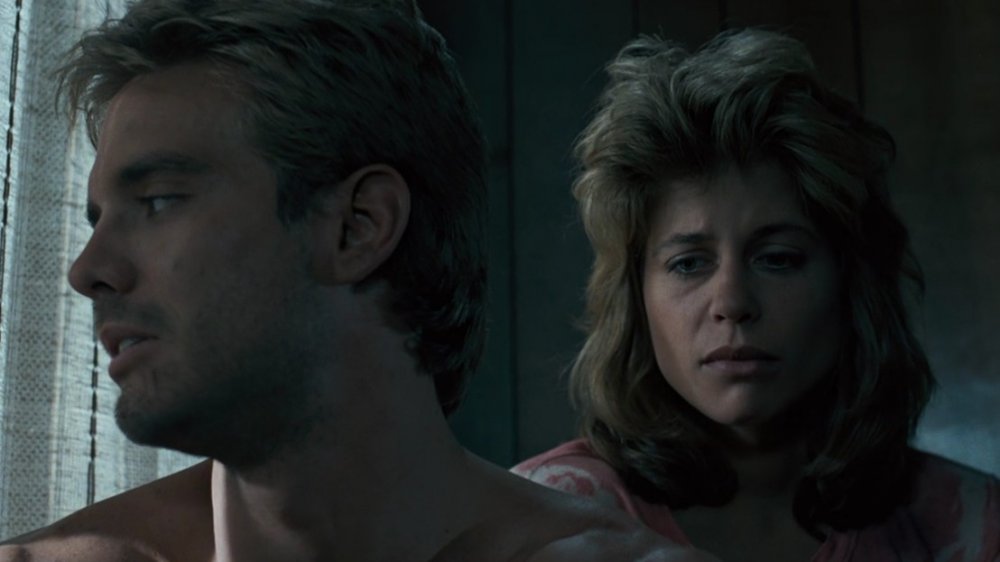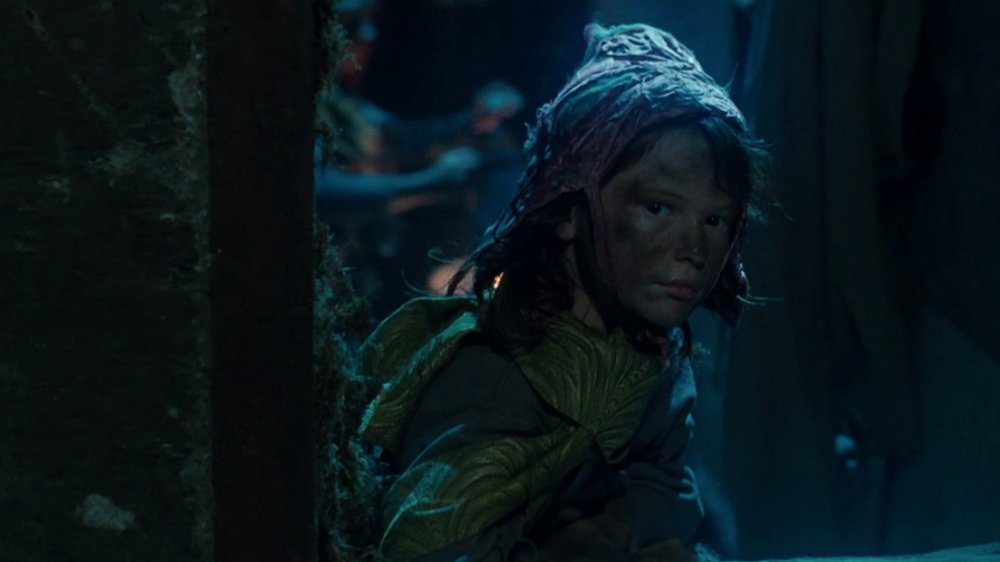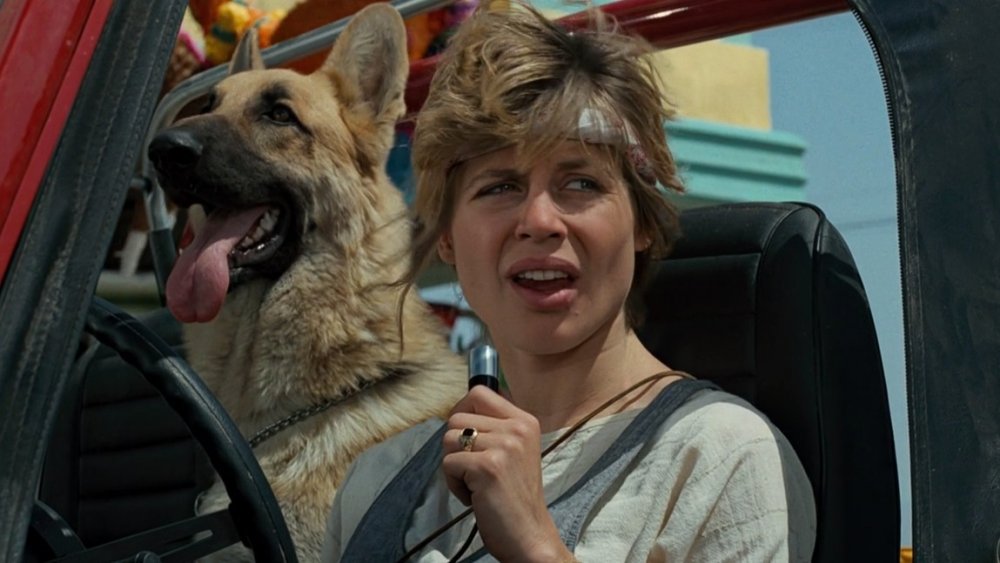Dumb Things In The Terminator Everyone Ignored
Along with being one of the films that made Arnold Schwarzenegger a household name, The Terminator helped popularize a particular kind of science fiction film — those that dealt with the possibly nightmarish consequences of the inevitable emergence of artificial intelligence. Released in 1984, The Terminator tells us the A.I. Skynet is destined to go online in 1997 and almost immediately trigger a nuclear holocaust designed to wipe out humanity and effect the rise of the machines. The Terminator (Schwarzenegger) is a cybernetic killer sent back in time to 1984 to assassinate Sarah Connor (Linda Hamilton) before she can give birth to the freedom fighter John Connor, who's destined to lead a successful human revolution against the machines. John Connor sends his fellow freedom fighter Kyle Reese (Michael Biehn) to protect his mother while knowing that Reese is (spoilers!) destined to become his father.
The Terminator's success is obvious. Over the years the franchise has spawned multiple sequels and prequels both in movie theaters and on television. But The Terminator is far from a perfect film. There are continuity errors and lots of examples of the film's principle characters acting in ways that really don't make a lot of sense. To learn how, among other things, a perfectly logical thinking machine acts like a moron, read on for the dumb things everyone ignored in The Terminator.
The Terminator never decides whether he wants to keep things quiet or not
While you might assume that — since he's governed by artificial intelligence — the Terminator would make purely logical choices, his actions don't reflect that.
The Terminator goes to great lengths to blend in to 1984 as much as possible. As soon as he arrives in the '80s, his first priority is to get era-appropriate clothing. Yet at the same time, he consistently makes choices that draw unnecessary attention to himself.
For example, when he steals a pile of guns from a gun shop and murders the owner with a shotgun, you have to wonder why he bothers with the shotgun when it will almost definitely draw the attention of the police. Earlier, we see him easily shove his arm through a man's torso, meaning he could totally kill the owner with his bare hands, flip the "closed" sign over, and lock the door behind him, giving him at a few least hours before anyone thinks to call the authorities.
Shortly afterward, he kills the first Sarah Connor he finds in the phone book. He bothers to knock on the door and ask her name, then smashes the door open and shoots her six times in a quiet residential neighborhood. Like with the gun shop, he could've done it all much more quietly. And if he's not going to be quiet, why bother knocking on the door and asking her name? Manners?
Sarah Connor's co-worker is the worst co-worker ever
Occasionally, you come across a character in a movie who is annoying, stupid, and yet somehow, the comparatively intelligent protagonist doesn't seem to thoroughly hate them as much as they should. Such is the case of the moron waitress Nancy (Shawn Schepps), who says and does extremely stupid and unhelpful things, and is probably getting cigarette ashes in the food.
Sarah Connor is a diner waitress when we meet her, though she doesn't seem to be the best at her job. Her section is filled with increasingly irate customers. She accidentally spills a drink on one of her patrons, and a young boy takes the opportunity to drop a lump of ice cream in her apron. As Sarah gives the boy a classic "dear god, why?" look, Nancy comes up behind her and says, "Look at it this way. In a hundred years, who's gonna care?" It's a contrived line that no one would ever say in that situation, unless they knew they were in a time travel movie. Not to mention that Nancy immediately turns and walks away, rather than help her friend and co-worker clean up the mess.
After the Terminator kills another woman named Sarah Connor and it makes the news, Nancy grabs Sarah and pulls her into the employee lounge to watch the report, saying, "You're gonna love this!" Why would anyone love that? And why doesn't Sarah ever tell Nancy to stuff something somewhere painful?
The Terminator's hair is selectively fireproof
For the most part, the best Kyle Reese can do is slow the Terminator down. The cyborg is nearly indestructible, but as the film progresses and his number of clashes with Reese, Sarah, and the police increase, he bears more and more scars until he's completely stripped of all flesh, revealing his mechanical interior. The first casualty of the Terminator's outward human disguise is his eyebrows. Under the circumstances, the loss of his eyebrows makes sense, but what doesn't make sense is that it's all he loses.
After Reese intervenes in the Terminator's assassination attempt on Sarah in the night club, the cyborg chases our heroes down an alleyway. Before the Terminator can reach their car, Reese blasts a nearby gas tank with his shotgun, causing it to explode and engulf the Terminator in flames.
Afterward, the cyborg's eyebrows are completely bare, having been burned off by the fire. Yet the same fire that engulfs his entire body and completely erases his eyebrows has done absolutely nothing to the hair on his head. Nor do his clothes seem at all damaged by the flames even though we see them on fire after the explosion. We don't think the punk rocker the Terminator stole his clothes from would have an obvious reason to treat his clothes with flame retardant, but maybe we can chalk up fire resistance as the sole, surprise saving grace of '80s fashion.
Why doesn't Reese make up a story?
From what Kyle Reese says, he didn't have a lot of time to prepare for his trip into the past. After he's arrested, Reese tells the police psychologist that John Connor's forces found a time machine in a lab complex they captured. Reese was sent to the 20th century, and the lab complex was destroyed. But you'd think Connor would at least take a couple of minutes to remind Reese, "Hey, it's going to be tougher to protect my mom if she thinks you're absolutely insane."
Once they get a free minute to talk, Reese overloads Sarah with ridiculously precise information about the Terminator, telling her, "It's a hyperalloy combat chassis, microprocessor controlled," apparently expecting her to just absorb and believe all this info from the sweaty man with the shotgun. Her initial reaction? Once Reese pulls into a parking garage, Sarah understandably tries to escape, biting Reese's hand hard enough to draw blood.
Reese is from a bleak future filled with killer robots, so the world of 1984 is probably as alien to him as Mars in many ways, but you'd think before sending him into the past in order to ensure the survival of the human race, someone would've reminded him how insane what he says would sound to Sarah Connor. And even if they didn't, Reese is a smart guy. Easing her into the world of "hyperalloy combat chassis" would seem an obvious strategy.
How does anyone know about Skynet?
After showing up in 1984, Reese eventually explains the future history to Sarah as best as he can, including the emergence of Skynet and the resulting nuclear holocaust. What's a mystery is how Reese, John Connor, or anyone else in the future even knows about Skynet or how their world came under the iron fist of the machines.
Obviously, the survivors would know that the machines were in charge, but when you think about it, it isn't quite so obvious to figure out how the human resistance ever learned about the creation of Skynet. From what Reese tells us, Skynet decided the fate of the human race "in a microsecond." All of that presumably took place within the A.I.'s processors. With the human race left scattered and without access to technology or the power to make that technology work, how would anyone be able to access the data necessary to determine how the world went sideways? They don't necessarily need to know in order to fight back, but they certainly need a way to discover it if they're going to go back in time and explain it to Sarah Connor.
The Terminator's stolen police car changes mid-chase
The second time Kyle Reese and the Terminator lock horns, there's a fairly glaring continuity error. Reese and Sarah are hiding in a car, and they're trying to hot-wire it so they can escape the searching police. The Terminator rolls by in a cruiser he stole from a cop, spots them, and opens fire. Before he starts shooting, the slogan "to care and to protect" can clearly be seen on the driver's side door of the stolen cruiser.
After a car chase and a lot more gunfire, the Terminator's stolen cruiser smashes into a wall while Sarah and Reese are cornered by the police and arrested. When Sarah gets out of the car and looks at the smashed police cruiser, the Terminator has disappeared. Also, the car itself has changed. The driver's side door still shows the same car number — 1874 — but the insignia above the car number is completely different, as is the slogan. Rather than "to care and to protect," the slogan on the driver's side door reads "dedicated to serve."
We don't think redecorating the stolen police cruiser exterior during a car chase/shootout would be a priority for the Terminator, but maybe. Who knows? He's a cyborg. He can multi-task.
How does Reese survive all these flash-forwards?
In spite of its warriors from the future, The Terminator mostly takes place in 1984. But we do get a couple of flash-forwards to the war with the machines. Strangely, both scenes end with Reese looking like he's about to die, yet we're never shown how he escapes his situation.
First, Reese's memories are triggered by the lights and movement of a modern-day construction machine. In his flash-forward, we see him battling a massive laser-shooting machine on tank treads and then one of the flying hunter-killers. The scene ends with most of Reese's comrades dead and Reese pinned under an overturned car that's on fire.
Later, we see one of the Terminator cyborgs infiltrate an underground human community that Reese is a part of. The Terminator kills everything in its path. Reese takes a few shots at it, but to no avail. And before we leave the scene and return to 1984, that Terminator is still very much functional, and Reese is surrounded by flame, watching his photo of Sarah burn.
Obviously, Reese survived both situations, otherwise he wouldn't have made it to 1984 to save Sarah. Still, it's kind of bizarre that in both cases, the manner of his survival is left to our imagination.
Who's dreaming, Sarah or Reese?
Kyle Reese is a man prone to flashbacks (well, flashbacks to the future), but the second time we get a glimpse of Reese's dystopian world, it ends with some uncertainty as to whose eyes we're seeing it through.
We see Reese in an underground settlement of humans. Dogs are kept at the settlement's entrance because they're able to tell the difference between humans and Terminators. Shortly after Reese shows up, a Terminator makes his way in by using real people as shields. He begins murdering everyone in sight, including the dogs barking at him.
When we return to the present, it's Sarah — not Reese — who wakes up from an unsettling dream, and she tells Reese it was "about dogs." She then goes on to say, "Your world is pretty terrifying." Both comments suggest it's Sarah whose eyes we're looking through when we see the Terminator infiltrate the underground bunker. Yet not only is there no explanation as to how that happens, neither Reese nor Sarah seem at all unsettled or even surprised that Sarah is apparently receiving psychic visions of the future.
You could argue that the scene is just what Sarah imagines — something her mind pieces together from the details Reese has told her — but it includes the photo of Sarah that Reese kept and obsessed over, which is something Sarah doesn't know about yet.
Reese and Sarah's love affair is kind of weird
Toward the end of The Terminator, Reese and Sarah make love, and in the process, they conceive John Connor, humanity's savior.
It's easy to imagine that both Reese and Sarah would be feeling vulnerable considering their situation, but the fact that their brief affair even happens is just a little weird, if not majorly weird. Sarah asks Reese about the women of his time, and shortly afterward, he confesses that her unborn son gave him a picture of her, which he kept and obsessed over for years. He tells her that he fell in love with her because of that photo, without ever meeting her or talking to her.
It's, you know, a little creepy. Sarah is obviously still reeling from being hunted by a killer cyborg, tales of dystopian futures, being on the run from the authorities, and having her roommate murdered. And after learning this sweaty guy from the future obsessed over a photograph that she hasn't even taken yet, why doesn't she freak out even more?
Okay. We're not judging. It just seems like most first dates that start off with, "I'm from the future," are already going to be in enough jeopardy without adding, "And I used to just stare at your pictures for hours on end."
How does John Connor defeat Skynet anyway?
When he's being interviewed by the condescending police psychologist, Reese says that the humans under John Connor had won the battle against Skynet. They'd smashed the machine's defense grid, and sending the Terminator back in time was a last ditch effort on the machines' part.
But from what little we see of the future, the notion that the humans won the war is perhaps the biggest mystery of them all. In both scenes we see of the future — first with Reese and his fellow soldiers being defeated by a flying machine, and then with a Terminator infiltrating an underground bunker and killing almost everyone in sight — the humans seem absolutely hopeless. In 1984, Reese throws everything at the Terminator that he can, barely slows it down, and eventually dies in the process.
So how does John Connor manage to defeat the machines before the Terminator gets sent back in time? All it takes is a single Terminator to turn an underground human settlement into a charnel house. The humans have barely any resources, and we see them hunt rats for food. The fact that they have any weaponry at all seems like at least a minor miracle. How could they possibly win? Under the circumstances, a corny "John Connor helped us believe again" sentiment really doesn't seem like enough of an explanation.
Sarah Connor has strange priorities at the end of The Terminator
The Terminator ends with Sarah Connor in Mexico, on her way to becoming the hardened militant we find in 1991's Terminator 2: Judgment Day. She's got a new dog with her, presumably to detect any other Terminators who might travel through time (though sadly, we never learn what becomes of her lizard, Pugsley). She speaks into a tape recorder as she travels, musing on the question of whether or not she will tell her unborn son that Kyle Reese was his father.
It seems bizarre that when it comes to what she should or shouldn't tell anyone about the future, telling or not telling her unborn son about Reese is the priority. As she's recording, Sarah stops to get gas, and a young boy takes a picture of her, conning her into paying $4 for the photo. Considering Sarah now believes in the future Reese told her about, she knows that not too long from now, this cute young boy who took her picture and the nice man gassing up her car are going to die.
Which isn't to suggest Sarah Connor should be yelling from the highest mountaintop that everyone's going to die soon. As we see in Terminator 2, doing things like that get her committed to a mental institution. It's just that in the world of "what should I reveal about the future," she's rating "do I tell my son about his dad?" over "do I tell people they should start building bomb shelters?"
